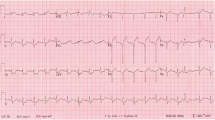Abstract
In 16 patients with blunt trauma to the chest, the role of cardiovascular nuclear medicine was evaluated using anterior chest flow assessment, with first-pass ejection fraction of left and right ventricles and 99mTc-pyrophosphate scintigraphy. The radiopharmaceutical used was pyrophosphate, labelled with approximately 20 mCi99mTc. The anterior chest flow and first-pass ejection fractions were initially obtained during the injection of 99mTc-pyrophosphate and were followed up 3 h later by anterior, LAO 45°, and left lateral views of the chest, using an LFOV gamma camera with a data processor. The results were compared with serial cardiac enzymes studies, electrocardiograms and echocardiograms. Of the patients, 77% showed scintigraphic evidence of cardiac contusion. The intensity of activity varied from grades I to II; five patients had abnormal echocardiographic findings. Only two had abnormal ejection fractions, and one patient had evidence of left ventricular aneurysm along with poor ventricular performance. Cardiac enzymes were found to be the least helpful. Electrocardiograms, though non-specific for myocardial damage, were abnormal in 62% of the patients. Eleven of our patients had both abnormal ECG and increased PYP uptake. Even though there is no agreement as to which noninvasive parameter is more sensitive in the diagnosis of myocardial contusion, 99mTc-pyrophosphate scintigraphy, in conjunction with ECG, seems promising in this respect.
Similar content being viewed by others
References
Barber H (1944) The effects of trauma, direct and indirect, on the heart. Q J Med 37:137–167
Botvenick EH, Shames D, Hutchinson JC, Roe BB, Fitzpatrick M (1976) Noninvasive diagnosis of a false left ventricular aneurysm with radioisotope gated cardiac blood pool imaging. Am J Cardiol 37:1089–1093
Brantigan CO, Burdick O, Hopeman AR, Eiseman (1978) Evaluation of technetium scanning for myocardial contusion. J Trauma 18:460–463
Brigth EF, Beck CS (1935) Nonpenetrating wounds of heart; clinical and experimental study. Am Heart J 10:293–321
Coleman J, Gonzalez A, Harlaftis N, Symbas Pn (1976) Myocardial contusion: Diagnostic value of cardiac scanning and echocardiography. Surg Forum 27:293–294
Chiu CL, Roelofs JD, Go RT, Dotty DB, Rose EF, Christie JH (1975) Coronary angiographic and scintigraphic findings in experimental cardiac contusion. Radiology 116:679–683
Datz FL, Lewis SE, Parkey RW, Bonte FJ, Buja LM, Willerson JT (1980) Radionuclide evaluation of cardiac trauma. Semin Nucl Med 10:287–292
Doherty PW, McLaughlin PR, Billingham M, Kernoff R, Goris ML, Harrison DC (1979) Cardiac damage produced by direct current countershock applied to the heart. Am J Cardiol 43:225–232
Doty DB, Anderson AE, Rose EF, Go RT, Chiu CL, Ehrenhaft JL (1974) Cardiac trauma: clinical and experimental correlations of myocardial contusion. Ann Surg 180:452–460
Go RT, Chiu CL, Doty DB, Cheng HF, Christie JH (1974) Radionuclide imaging of experimental myocardial contusion. J Nucl Med 15:1174–1175
Go RT, Doty DB, Chiu CL, Christie JH (1975) A new method of diagnosing myocardial contusion in man by radionuclide imaging. Radiology 116:107–110
Gonzalez AC, Waldo W, Gravanish N, Harlaftis N, Symbas PN (1977) Imaging of experimental myocardial contusion: Observations and pathologic correlations. Am J Roentgenol 128:1039–1040
Greendyke RM (1966) Traumatic rupture of aorta: special reference to automobile accidents. JAMA 195:527–530
Guzy PM (1978) Creatine phosphokinase-MP (CPK-MB) and the diagnosis of myocardial infarction. West J Med 127:455–460
Levitsky S (1975) new insights in cardiac trauma. Surg Clin North Am 55:43–55
Liedtke AJ, DeMuth WE (1973) Nonpenetrating cardiac injuries: a collective review. Am Heart J 86:687–697
Life JS, Pince BW (1968) Response of the canine heart to horacic impact during ventricular diastole and systole. J Biomech 1:169–173
Lyons KP, Olson HG, Aronow WS (1980) Pyrophosphate myocardial imaging. Sem Nucl Med 10:168–177
Marcus ML, Kerber RE (1977) Present status of the 99m Technetium pyrophosphate infarct scintigram. Circulation 56:335–339
McDaniel MM, Morton ME (1977) 99m Tc-pyrophosphate imaging demonstrating skeletal muscle and myocardial activity following cardioversion. Clin Nucl Med 2:57–59
Parkey RW, Bonte FJ, Buja LM, Stokely EM, Willerson JT (1977) Myocardial infarct imaging with technetium-99m phosphates. Semin Nucl Med 7:15–28
Potkin RW, Werner JA, Trobaugh GB, Chestnut CH, Carrico CJ, Hallstrom A, Cobb LA (1982) Evaluation of noninvasive tests of cardiac damage in suspected cardiac contusion. Circulation 66:627–631
Pugh Br, Buja LM, Parkey RW, Poliner LR, Stokely EM, Bonte FJ, Willerson JT (1976) Cardioversion and “false positive” technetium-99m stannous pyrophosphate myocardial scintigrams. Circulation 54:339–403
Sevitt S (1977) The mechanisms of traumatic rupture of the thoracic aorta. Br J Surg 64:166–173
Simon TR, Parkey RW, Lewis Se (1983) Role of cardiovascular nuclear medicine in evaluating trauma and the postoperative patient. Sem N Med 13:123–141
Skorton DJ, Collins SM, Nichols J, Pandian NG, Bena JA, Kerber RE (1983) Quantitative texture analysis in two-dimensional echocardiography: application to the diagnosis of experimental myocardial contusion. Circulation 68:217–223
Viano DC (1983) Cardiovascular injury from blunt thoracic impact of epinephrine and isoproterenol injected rabbits. Aviat Space Environ Med 54:988–993
Author information
Authors and Affiliations
Rights and permissions
About this article
Cite this article
Lopez-Majano, V., Sansi, P. & Colter, R. Nuclear medicine in the diagnosis of cardiac contusion. Eur J Nucl Med 11, 290–294 (1985). https://doi.org/10.1007/BF00252339
Received:
Issue Date:
DOI: https://doi.org/10.1007/BF00252339




